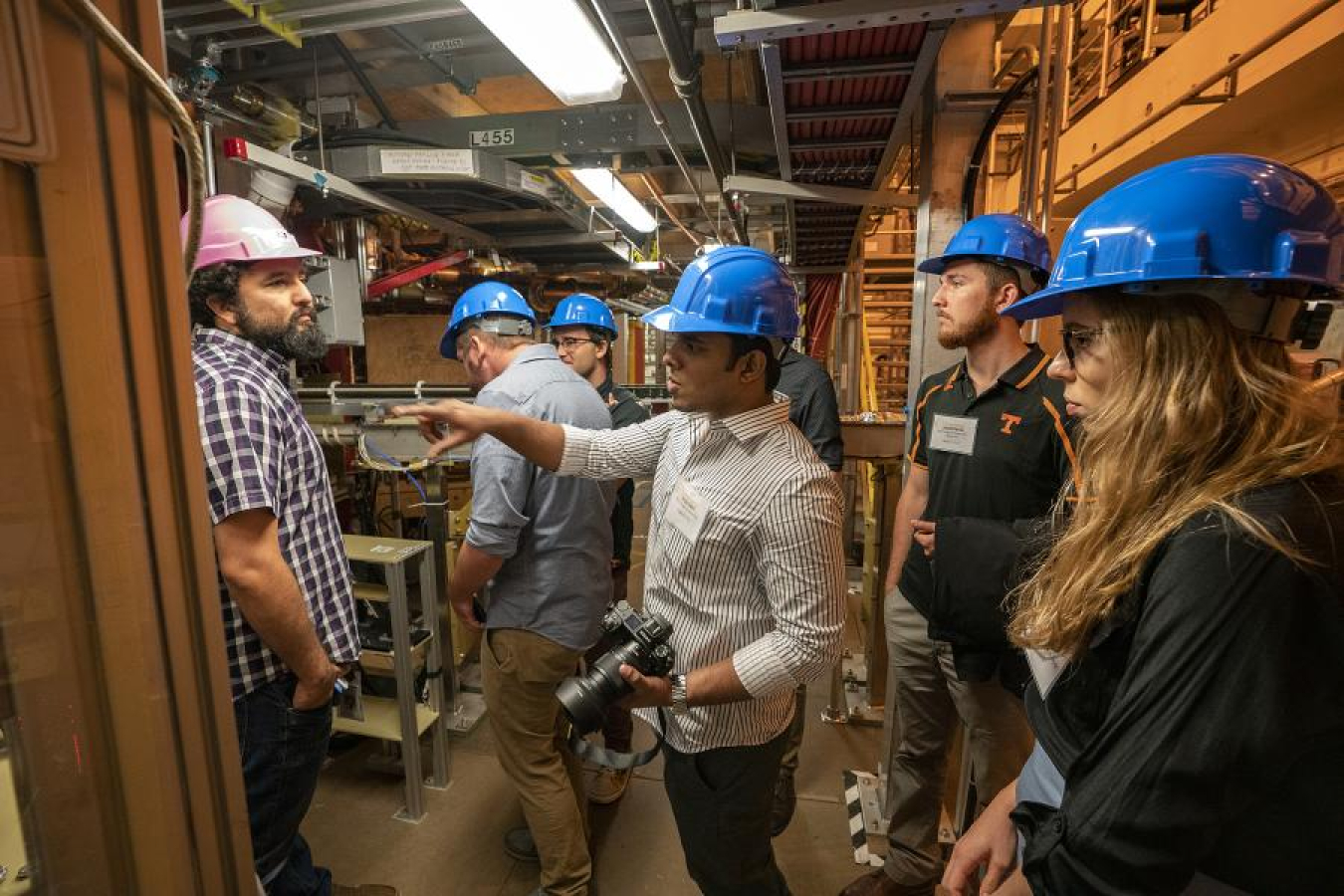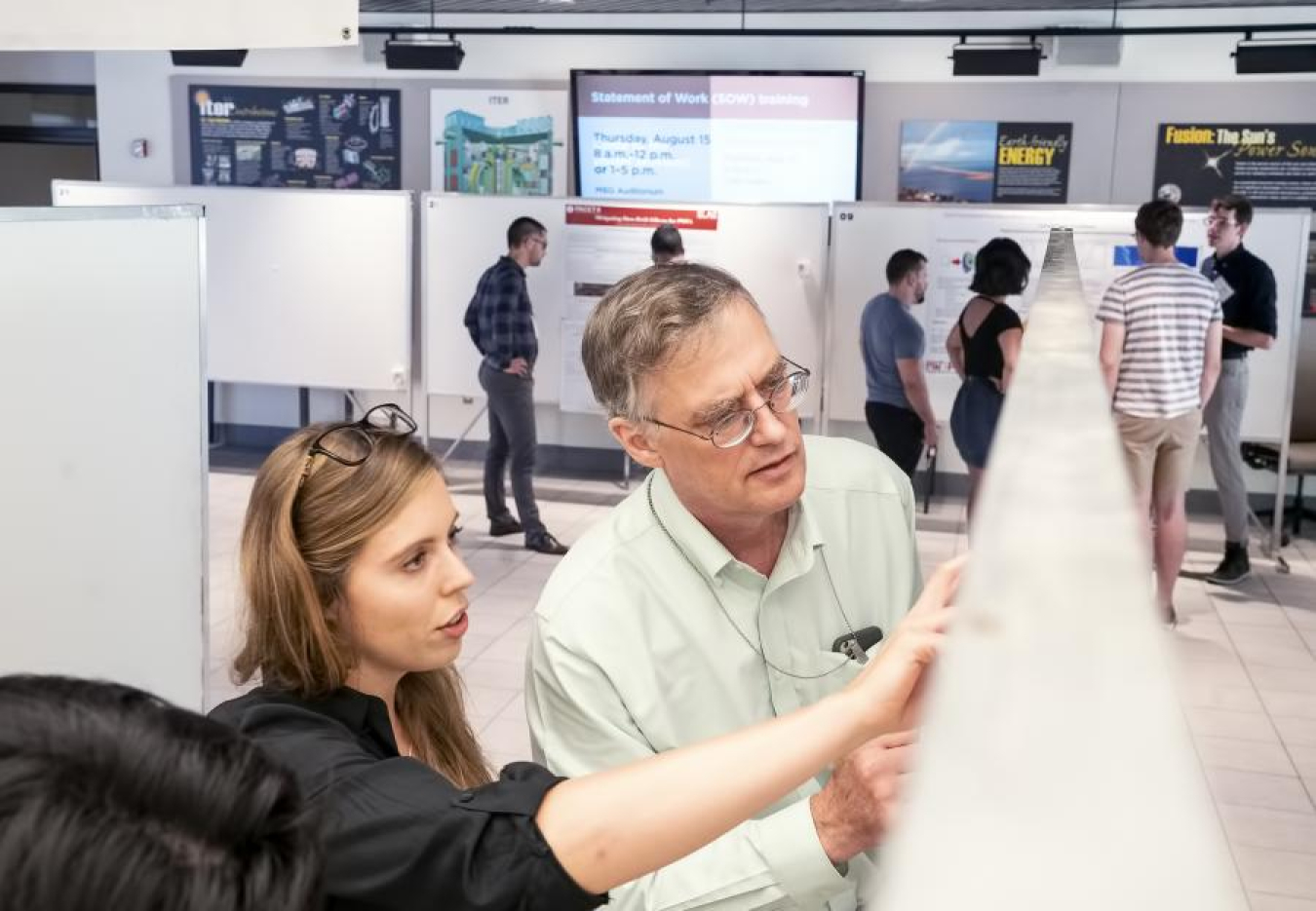A cohort of graduate physics students came to Princeton for the annual Graduate Summer School in Plasma Physics at the Princeton Plasma Physics Lab.
August 28, 2019
Editor's note: this article was originally posted on Princeton Plasma Physics Laboratory's website.
Lightning has struck twice, and in the same place. For one week in August for the second consecutive year, a cohort of graduate physics students came to Princeton for the annual Graduate Summer School (GSS) in Plasma Physics at the U.S. Department of Energy’s (DOE) Princeton Plasma Physics Laboratory (PPPL). During the week of Aug. 12, 31 students learned about low-temperature plasma, computational methods, turbulence, and plasma diagnostics in courses that were also live-streamed over the internet. They also took part in a poster session and gave oral presentations showcasing their research.
“Summer is a special time. It’s when PPPL hosts undergraduate interns and physics professors, and now graduate students. It’s really nice to show off what we are doing here and have people take that back to their home institutions and maybe help develop their research further,” said Arturo Dominguez, PPPL’s Science Education Senior Program Leader and one of the summer school’s organizers.
Plasma physics is the study of plasma — the hot, charged state of matter composed of free electrons and atomic nuclei that naturally occurs in many forms, including stars, lightning, and the aurora borealis. Plasma is used at PPPL and other places in experiments involving fusion, the mashing together of plasma particles to create massive amounts of energy. Fusion is the process that lights the stars, and scientists are seeking to replicate it on Earth for a virtually inexhaustible supply of power to generate electricity.
The students came from a wide range of universities, including the Georgia Institute of Technology, Dartmouth College, North Carolina State University, and the University of Tennessee, Knoxville. They are at an early stage of their graduate studies and come from a wide range of physics backgrounds. They were welcome to apply as long as their research had a substantial intersection with plasma physics and the student believed that the summer school might be beneficial.

Some of the graduate students liked that the summer school program exposed them to topics they never would have encountered on their own. “This week, I learned that I like things I didn’t even know existed,” said Liona Fan-Chiang, a graduate student in the applied science and technology program at the University of California, Berkeley. “I come from an experimental background so I thought I would like learning about diagnostics the most, but it turns out I really liked the computation section. It’s a field that I haven’t thought through before.”
The sentiment was echoed by Enrique Segura, who is beginning a master’s program in physics at California State University, Los Angeles. “If it weren’t for this program,” he said, “I would never have learned about this material. The PPPL summer school is very helpful to students whose home institutions don’t have plasma physics programs.”
The program was also a chance for the students to meet other people in their field and explore partnerships. “I was just discussing collaborations with one of the other students here,” Segura said. “This summer school really builds community.”
Dominguez was happy that more graduate students applied this year than last. “Because of the bigger crowd, we were able to get students from a wider variety of backgrounds, including high-energy-density, low-temperature plasma, and astrophysics. We got a really nice mix of research topics and institutions.”
The program also provided a glimpse into plasma physics research being done outside Princeton. “As with last year, my favorite part was the poster session,” Dominguez said, “because that was when I could see what they were all working on; they are doing some really interesting research all around the country.”
Steven Cowley, PPPL director, who gave one of the lectures, was encouraged by the students’ interest in plasma physics. “It was wonderful to have the latest generation of plasma physicists at Princeton,” he said. “They were bright, exciting, motivated by the field, and for many of them it was their first time in Princeton, and Princeton is the home of plasma physics.”
The GSS program struck at least one student as worthy of expansion. “The education and networking opportunities are the kinds of things that justify not only keeping the program,” Segura said, “but also making sure it is enhanced in the future.”
This program is supported by the U.S. Department of Energy’s (DOE) Office of Science.
PPPL, on Princeton University's Forrestal Campus in Plainsboro, N.J., is devoted to creating new knowledge about the physics of plasmas — ultra-hot, charged gases — and to developing practical solutions for the creation of fusion energy. The Laboratory is managed by the University for the U.S. Department of Energy’s Office of Science, which is the single largest supporter of basic research in the physical sciences in the United States and is working to address some of the most pressing challenges of our time. For more information, visit https://energy.gov/science
Raphael Rosen
Raphael Rosen is a science writer at Princeton Plasma Physics Laboratory, one of the Energy Department’s 17 National Labs.

